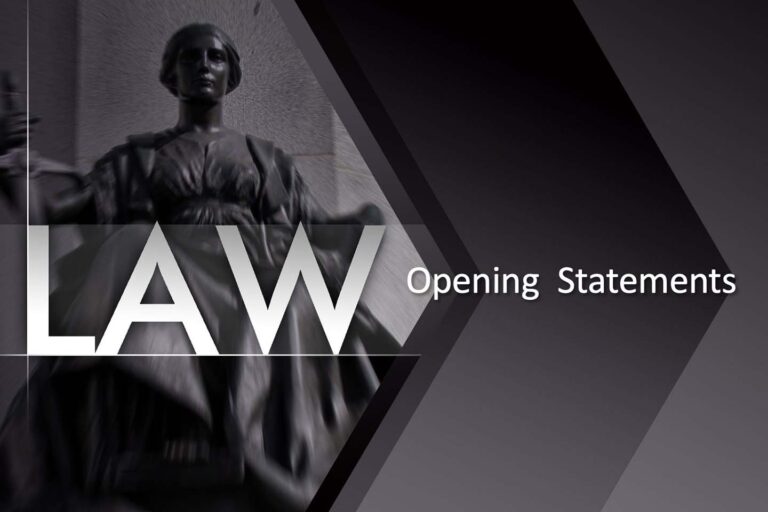
Visual Persuasion: The Art of PowerPoint in Opening and Closing Statements
When it comes to trials, the power of persuasion is everything, and PowerPoint presentations can be a highly effective tool to enhance your connection with the jury. Used strategically in both opening statements and closing arguments, PowerPoint can help jurors better understand and retain your key points. However, there are important considerations to keep in mind to maximize its impact.
Less is More: Focus on Clarity and Simplicity
One of the golden rules of an effective PowerPoint presentation is to keep the slides simple and uncluttered. Slides overloaded with text will distract the jury from the real star of the presentation: you. Instead of packing slides with long paragraphs or detailed explanations, focus on:
- Short Phrases: Use concise phrases that summarize key points.
- Visuals: Incorporate diagrams, images, or charts to illustrate complex concepts.
- Bullet Points: Limit slides to 2-3 short bullet points that align with your oral argument.
The goal is to have the jury’s attention centered on you while the slides provide visual support for your message. Think of your PowerPoint as a visual outline that complements, rather than competes with, your spoken words.
PowerPoints in Opening Statements

During opening statements, PowerPoint slides can serve as a roadmap for your case. However, it’s crucial to remember that no evidence has been admitted yet. If your slides contain evidence or exhibits, you must share them with opposing counsel ahead of time. This allows them to raise any objections and ensures that your presentation complies with court rules.
To make your opening PowerPoint effective:
- Use Themes: Highlight key themes that will guide the jury through the trial.
- Avoid Overloading Slides with Evidence: Instead, use general visuals, keywords, or phrases that set the stage for what the jury will hear.
- Be Transparent: Clear your slides with opposing counsel to avoid delays or objections in court.
PowerPoints in Closing Arguments
Closing arguments are where PowerPoint presentations can truly shine. By the end of the trial, jurors have heard all the evidence, and your slides can help tie everything together. A particularly effective use of PowerPoint in closing is to walk the jury through the verdict form.
- Display the Verdict Form: Show each page of the verdict form on your slides and explain how the evidence supports each answer.
- Weave Evidence Into Each Question: For every question on the form, connect it directly to the testimony, exhibits, or facts presented during the trial.
- Highlight Key Evidence: Use visuals or short phrases to remind jurors of pivotal points that reinforce your argument.
This approach not only clarifies the legal questions jurors must answer but also reinforces how the evidence supports your client’s position.
Tips for Effective Presentations
- Practice Makes Perfect: Rehearse your PowerPoint presentation to ensure a smooth delivery.
- Keep Fonts and Colors Simple: Avoid distracting fonts or color schemes that detract from your message.
- Engage with the Jury: Don’t rely solely on your slides—maintain eye contact and interact with jurors to keep them engaged.
- Be Flexible: Be prepared to adjust your presentation based on objections or feedback from the court.
Conclusion
PowerPoint can be a game-changer in trial advocacy, helping you clearly communicate your case to the jury. By keeping slides simple and focused, and by using them to reinforce your oral argument, you can make a lasting impression. Whether walking the jury through the verdict form or setting the stage in your opening statement, a well-crafted PowerPoint presentation is a powerful tool that can enhance your persuasiveness and ensure your message resonates.

